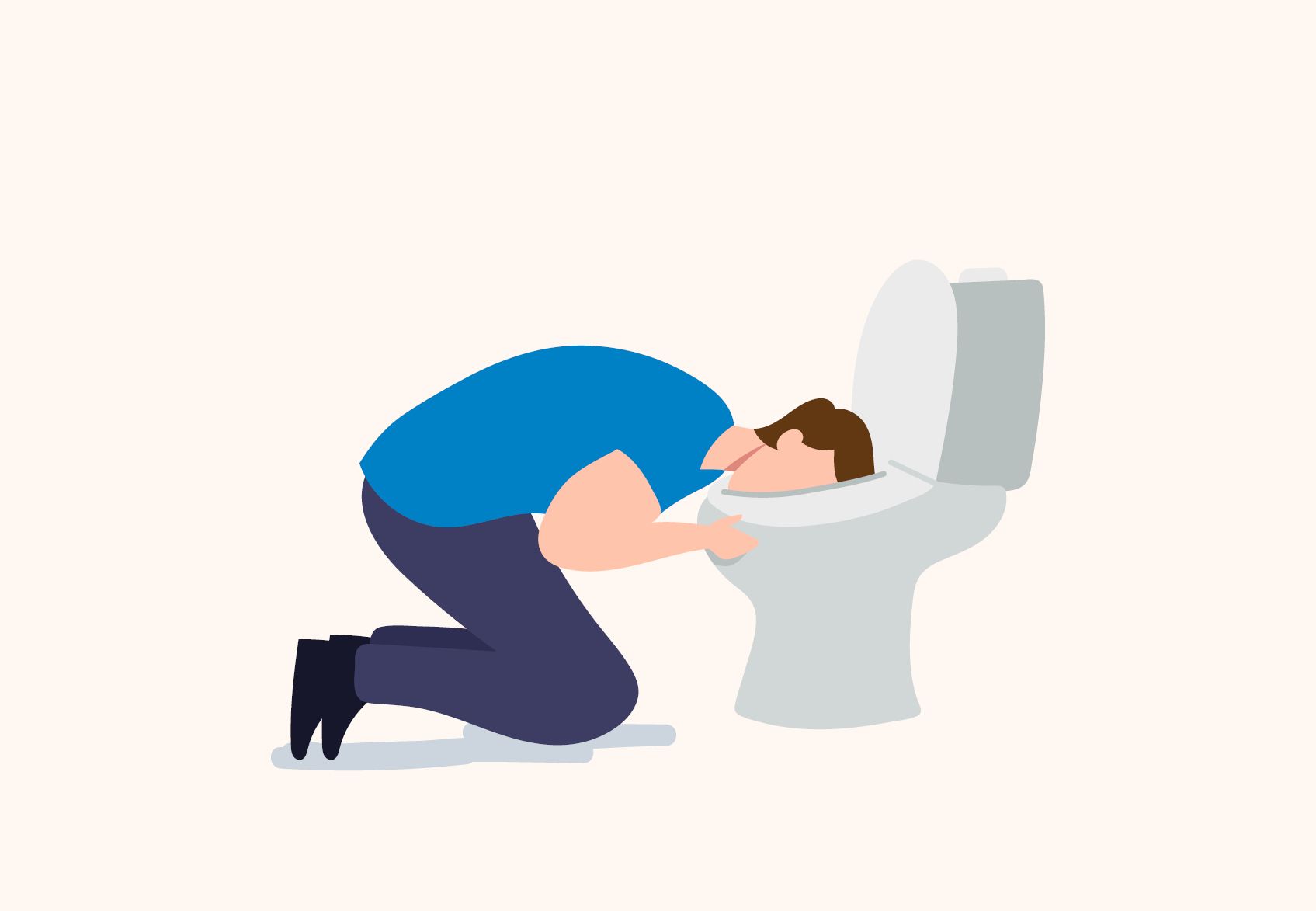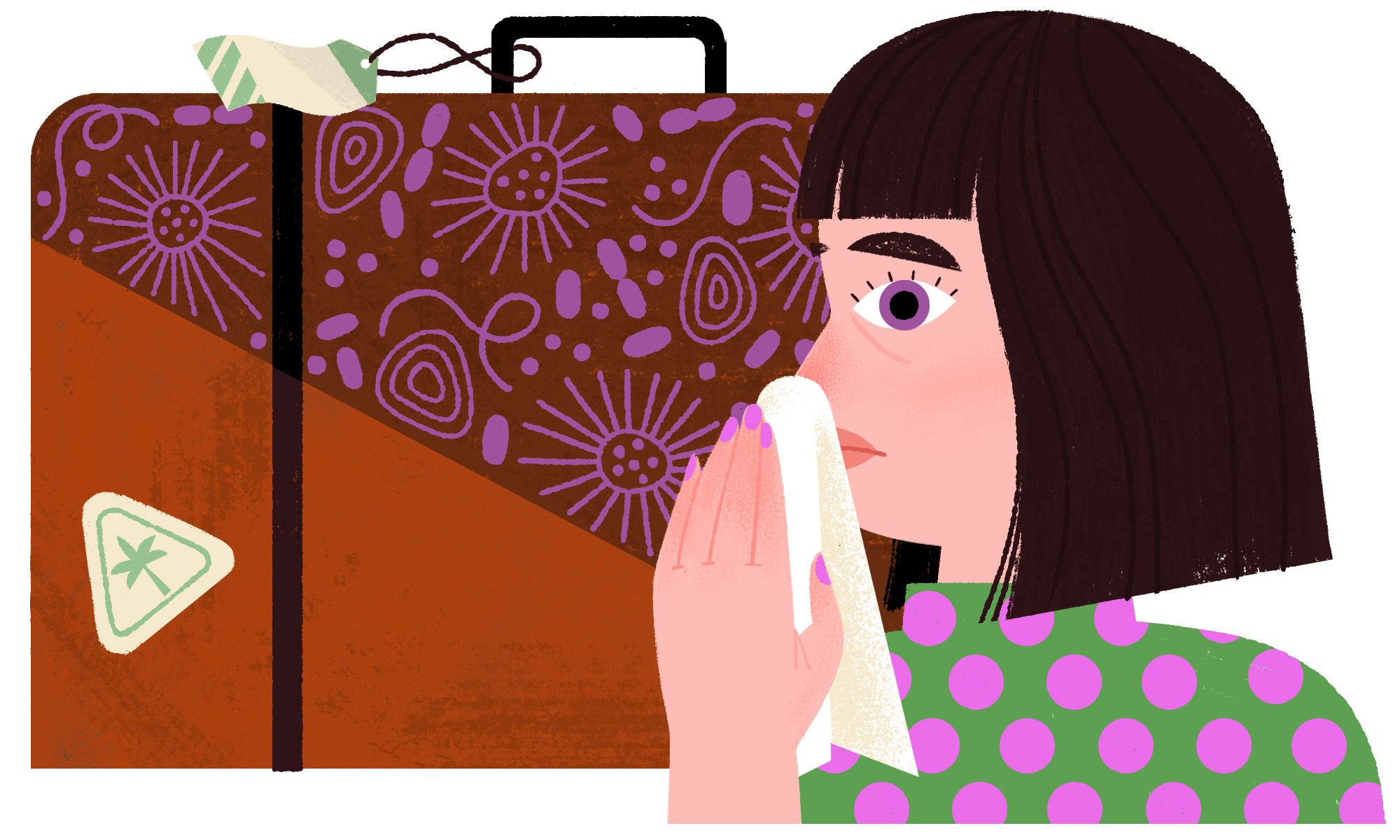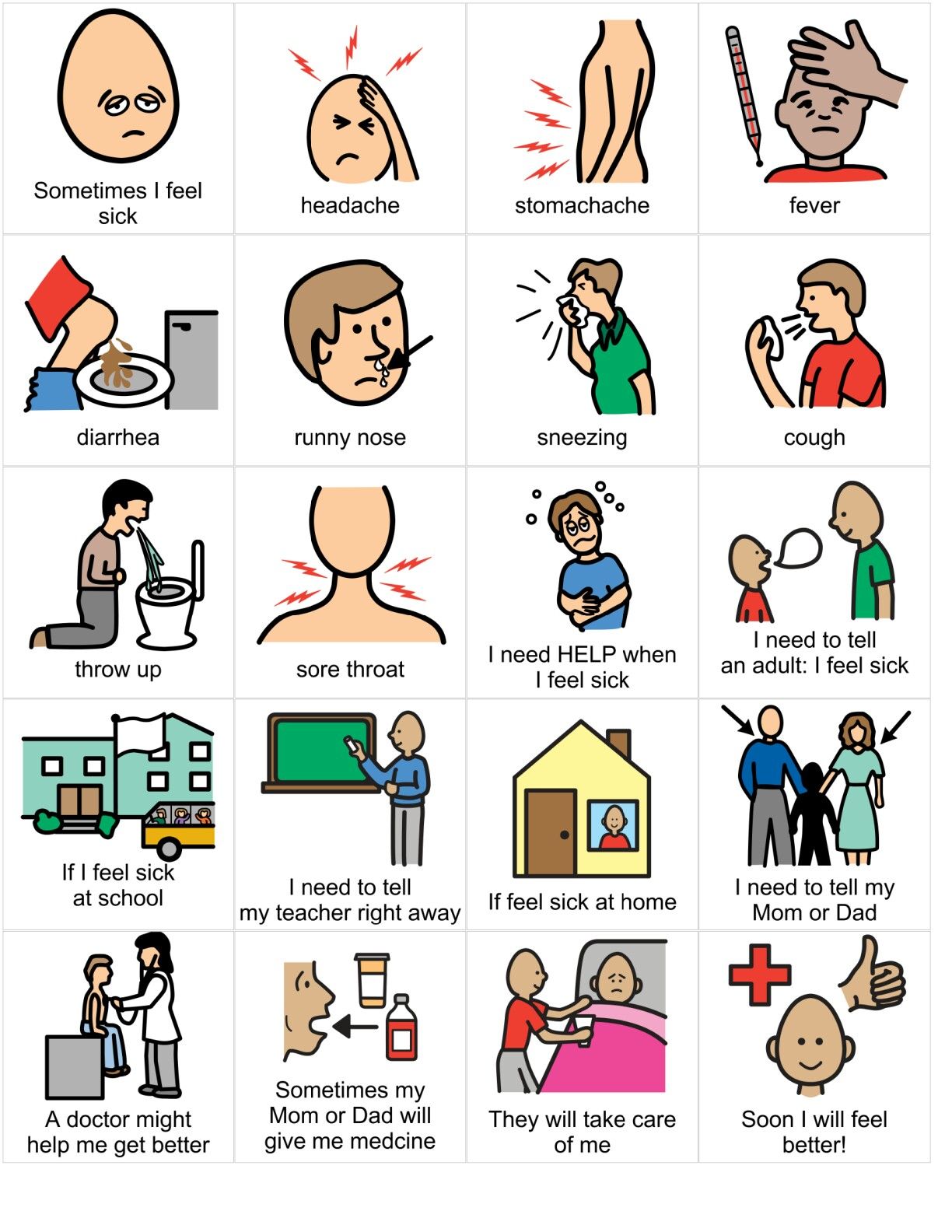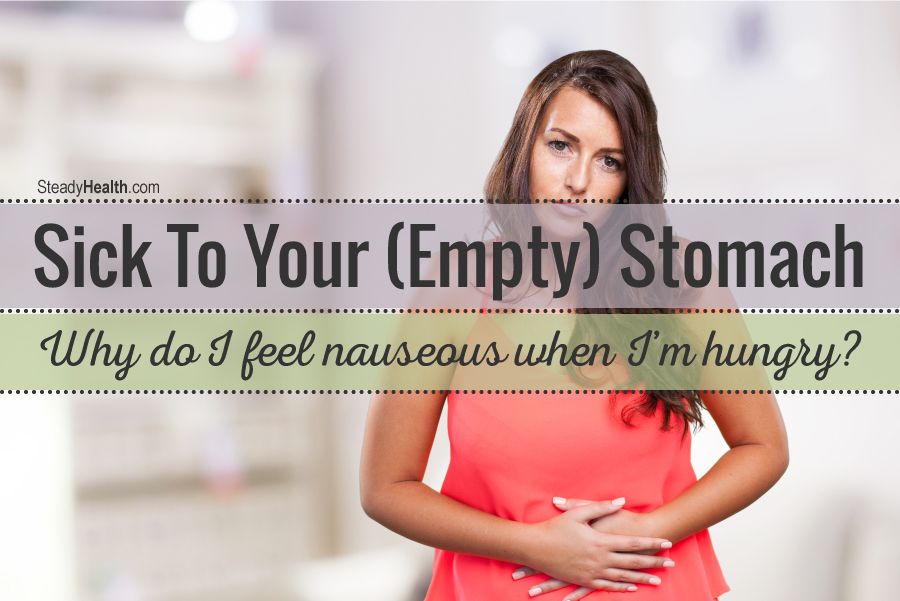Why Feel Nauseous: 7 Causes and How to Treat It
What causes nausea after eating? How can you treat nausea after meals? Get answers to these questions and more.
Common Causes of Nausea After Eating
Most people have experienced nausea at some point in their life, and for some, this uncomfortable feeling occurs after eating. Here are seven of the most common causes of nausea after eating:
1. Pregnancy
Nausea during pregnancy doesn’t just happen in the morning, it can also occur after lunch, dinner, and snacks. This is because pregnant individuals produce the hormone human chorionic gonadotropin (HCG), which can cause nausea as a side effect. Additionally, the rise of estrogen or changes in the balance of gut bacteria during pregnancy could be another reason nausea after eating increases.
2. Food Poisoning
Food poisoning can cause nausea and often vomiting as well. Foods contaminated with either a virus or bacteria can disrupt the gastrointestinal tract, triggering nausea. Uncooked or pre-packaged foods, like salad, fruits, and undercooked meat, are common culprits of food poisoning. If you also experience diarrhea, fever, vomiting, and stomach cramps, your nausea is most likely due to food poisoning. It’s important to see a doctor immediately if you experience bloody vomit or bowel movements, extreme pain, blurry vision, or diarrhea for more than three days.

3. Food Intolerances or Allergies
When you eat something you are allergic or have an intolerance to, your body’s immune system responds with chemicals, like immunoglobulin E (IgE) and histamine, that can cause symptoms such as nausea. The most common food allergies include eggs, milk, wheat, soy, fish, shellfish, peanuts, and tree nuts. If you think your nausea is due to an allergy, get tested by an allergist who can help you determine which foods may be to blame.
4. Gastroesophageal Reflux Disease (GERD)
Gastroesophageal reflux disease, or GERD, is a condition where stomach acid backs up into the esophagus, often causing nausea after eating. This can happen when the lower esophageal sphincter, the muscle that separates the stomach and esophagus, becomes weakened or relaxes inappropriately. Symptoms of GERD include heartburn, difficulty swallowing, and a sour taste in the mouth.
5. Gastroparesis
Gastroparesis is a condition where the stomach takes too long to empty, causing food to remain in the stomach for an extended period of time. This can lead to nausea, vomiting, bloating, and abdominal pain after eating. Gastroparesis is often caused by damage to the vagus nerve, which controls the stomach’s movements, and can be a complication of diabetes or other underlying health conditions.

6. Chronic Stress
Chronic stress can have a significant impact on the digestive system, often leading to nausea, especially after eating. When the body is under stress, it diverts blood away from the digestive system and toward the muscles, which can interfere with the proper functioning of the gastrointestinal tract and cause nausea.
How to Treat Nausea After Eating
If you’re experiencing nausea after eating, there are several things you can do to help alleviate the discomfort:
Eat Bland, Easy-to-Digest Foods
Opt for foods that are easy on the stomach, such as plain rice, toast, crackers, or bananas. Avoid greasy, spicy, or heavy meals, which can be more difficult to digest and may worsen nausea.
Drink Cold Water Slowly
Sipping cold water slowly can help settle the stomach and reduce feelings of nausea. Avoid gulping down large amounts of liquid, as this can sometimes exacerbate the problem.
Try Ginger or Peppermint
Both ginger and peppermint have been shown to have anti-nausea properties. You can try chewing on some fresh ginger or sipping peppermint tea to help alleviate your nausea.

Limit Physical Activity
Engaging in strenuous physical activity after a meal can sometimes worsen nausea. Try to take it easy and avoid any intense exercise until your nausea subsides.
Seek Medical Attention if Necessary
If your nausea lasts for more than two days or is resistant to home remedies, it’s a good idea to see your doctor. They can help determine the underlying cause and provide appropriate treatment.
By understanding the common causes of nausea after eating and trying some simple remedies, you can often find relief and get back to enjoying your meals without discomfort.
7 Causes and How to Treat It
Nausea After Eating: 7 Causes and How to Treat It
Jump to
- Main content
- Search
- Account
Insider logoThe word “Insider”.
ReviewsThe word Reviews
Account iconAn icon in the shape of a person’s head and shoulders. It often indicates a user profile.
Account iconAn icon in the shape of a person’s head and shoulders. It often indicates a user profile.
Back to Top
A white circle with a black border surrounding a chevron pointing up. It
indicates ‘click here to go back to the top of the page.’
Reviews
Health
Save Article IconA bookmarkShare iconAn curved arrow pointing right.
Read in app
This article was medically reviewed by Jason R. McKnight, MD, MS, a family medicine physician and clinical assistant professor at Texas A&M College of Medicine.
Medically Reviewed
Reviewed By Check Mark IconA check mark. It indicates that the relevant content has been reviewed and verified by an expert
Our stories are reviewed by medical professionals to ensure you get the most accurate and useful information about your health and wellness. For more information, visit our medical review board.
If you’re feeling nauesous after a meal, try eating only bland foods and drink cold water slowly.
Goran13/Getty Images
- Common causes of nausea after eating include food allergies, stress, and pregnancy.
- If your nausea lasts more than two days or is resistant to home remedies, see your doctor.
- To treat nausea after eating, chew ginger, drink cold water slowly, and limit your physical activity.
Most people have felt nauseous at some point in their life — the queasy, upset feeling in your stomach that may make you feel like vomiting.
For some, this uncomfortable sensation occurs after eating, usually 30 to 60 minutes following a meal, and it may last one to three hours, says Jesse P. Houghton, MD, FACG, the senior medical director of Gastroenterology at SOMC Gastroenterology Associates.
If you do experience nausea after eating, here are seven of the most common causes and how to properly treat it.
1. Pregnancy
Nausea during pregnancy doesn’t just happen in the morning, it can also occur after lunch, dinner, and snacks.
That’s because pregnant people produce the hormone human chorionic gonadotropin (HCG), which comes with nausea as a side effect.
“The rise of estrogen or the change in the balance of the bacteria in the gut during pregnancy could be another reason nausea after eating increases,” says Niket Sonpal, MD, an internist and gastroenterologist.
2. Food poisoning
It’s well known that food poisoning can cause nausea. These foods are contaminated with either a virus or bacteria which disrupts the GI tract triggering nausea and, oftentimes, vomiting, says Houghton.
Usually, bacteria that cause food poisoning die when exposed to temperatures higher than 140 degrees Fahrenheit./770535-article-why-did-i-get-sick-after-a-flu-shot-01-5a72326a3418c6003620c85d.png) That’s why pre-packaged and raw foods, like salad, fruits, and undercooked meat are common culprits of food poisoning since they’re uncooked, says Sonpal.
That’s why pre-packaged and raw foods, like salad, fruits, and undercooked meat are common culprits of food poisoning since they’re uncooked, says Sonpal.
If you are also experiencing diarrhea, fever, vomiting, and stomach cramps, your nausea is most likely due to food poisoning.
Important: Visit a doctor immediately if you experience bloody vomit or bowel movements, extreme pain, blurry vision, or diarrhea for more than three days.
3. Food intolerances or allergies
When you eat something you are allergic or have an intolerance to, your body’s immune system responds with chemicals, like immunoglobulin E (IgE) and histamine, that can cause symptoms such as nausea, says Sonpal.
The most common food allergies are:
- Eggs
- Milk
- Wheat
- Soy
- Fish
- Shellfish
- Peanuts
- Tree nuts
If you think your nausea is due to an allergy, get tested by an allergist who can help you determine which foods may be to blame.
4. Gastroesophageal reflux disease
Gastroesophageal reflux disease (GERD), aka acid reflux, occurs when stomach acid flows up into the esophagus, inflaming it, which can trigger nausea, says David D. Clarke, MD, a clinical assistant professor of Gastroenterology Emeritus and assistant director at the Center for Ethics at Oregon Health & Science University.
If you are also experiencing heartburn, difficulty swallowing, chronic coughing, and disrupted sleep, your nausea may be due to GERD.
Note: GERD is not life-threatening, but continued esophageal inflammation can lead to more serious problems like esophagitis and could require further treatments and even surgery.
Treatment for GERD includes:
- Taking over-the-counter antacids, like Tums and Pepto Bismol.
- Using prescription medication, like famotidine and cimetidine, reduces or blocks acid production.
- Undergoing surgery such as fundoplication, which wraps the upper part of the stomach around the esophagus, which strengthens the valve between the two organs.

5. Irritable bowel syndrome
Irritable bowel syndrome (IBS) affects the large intestine and causes symptoms such as bloating, cramping, and nausea.
“There is no exact cause of an IBS flare-up. However, most symptoms, such as vomiting, tend to worsen after consuming food that is difficult to digest,” says Sonpal. “Sometimes IBS nausea also occurs because of certain trigger foods, medications, or stress.”
Treatment for IBS includes:
- Avoiding foods that trigger your symptoms
- Regular exercise
- Drinking lots of fluids
- Removing foods that can cause gas like gluten or FODMAPs
- Taking a fiber supplement or laxative
- Starting an antidepressant
6. Gallbladder disease
Most variations of gallbladder disease result in nausea after eating. That’s because the organ works to push bile into the small intestine and help digestion.
Medical term: Gallbladder disease is any condition that affects the gallbladder. Examples include cholecystitis, gallstones, and gangrene.
“If the flow of bile is obstructed, for example by a gallstone, the resulting stretch on the gallbladder or its associated ducts can lead to nausea,” says Clarke.
Other signs of gallbladder disease include:
- Yellowing of the skin or whites of the eyes,
- Fever
- Chills
- Pain on the right side of the abdomen
- Dark urine
If you experience any of the above symptoms, visit a doctor who can diagnose you and provide proper treatment. Gallbladder disease is rarely a life-threatening condition.
7. Anxiety or stress
As if stress and anxiety aren’t enough to deal with on their own, these mental health issues can also cause gastrointestinal problems like nausea or diarrhea.
“Stress hormones can affect how our GI tract contracts, either slowing it down or speeding it up,” says Houghton.
To determine if anxiety is causing your post-meal nausea, keep a journal of when you feel anxious and when you are nauseous. This way you can notice any patterns between the two.
Techniques to reduce stress include:
- Meditation
- Breathing exercises
- Exercising regularly
- Setting realistic goals for yourself
- Working with a mental health professional
How to reduce nausea
- Limiting activity directly after eating
- Eating small, frequent meals
- Consuming ginger
- Drinking cold, clear fluids slowly
- Avoiding known trigger foods
- Not brushing your teeth directly after eating
- Eating bland foods like bread
Insider’s takeaway
Factors such as pregnancy, IBS, and stress can cause people to become nauseous after eating.:max_bytes(150000):strip_icc()/postoperative-nausea-tips-3156893_V2-01-a563b0c0c4ac49e6ac18e18420b6c1e3.png)
According to Clarke, you should see a doctor if:
- Your nausea lasts more than two days
- You’re dehydrated due to diarrhea or vomiting
- You’re vomiting longer than a day
- Home treatment isn’t working
- You have worsening abdominal pain
If you are experiencing nausea after a meal, try chewing on ginger, slowly drinking cold water, or limiting your activity until the feeling passes.
Sarah Fielding
Sarah Fielding is a freelance writer covering a range of topics with a focus on mental health and women’s issues. She is also the co-founder of Empire Coven, a space for highlighting trailblazing women across New York.
Read moreRead less
Related articles
Health
nausea
Primary Care
More. ..
..
Nausea After Eating: What You Should Know
Have you ever sat down to enjoy a delicious meal only to feel an unpleasant wave of nausea wash over you shortly after? If so, you’re not alone. Nausea after eating is a surprisingly common issue that plagues people of all ages. Whether it’s mild discomfort or a more severe reaction, the experience can be both frustrating and concerning. So, what causes this unsettling sensation, and what can you do to prevent it?
Common Triggers for Post-Meal Nausea
Nausea is a feeling of discomfort or unease in the stomach that can occur immediately after eating or after taking some time to develop. There are several reasons why you may experience nausea following a meal, including:
- Overeating. Consuming too much food can put pressure on the stomach and cause nausea.

- Food poisoning. Contaminated food can cause nausea, vomiting, and diarrhea.
- Gastroesophageal reflux disease (GERD). GERD occurs when stomach acid flows back into the esophagus, causing irritation and nausea following meals.
- Infections. Viral or bacterial infections such as the flu or gastroenteritis can trigger nausea, vomiting, and diarrhea.
- Food intolerance or allergy. Some people may experience symptoms after eating certain foods to which they are intolerant or allergic.
- Digestive issues. Digestive conditions, such as irritable bowel syndrome (IBS) or gastroparesis, can cause nausea.
- Other health conditions. Nausea after eating may be a symptom of other underlying health conditions, such as diabetes, kidney disease, or liver disease.
Symptoms of Nausea After Eating
After eating a meal, nausea can manifest in various ways, and its symptoms may differ depending on the individual and the underlying cause. In addition to nausea, several other symptoms may accompany post-meal nausea, including:
In addition to nausea, several other symptoms may accompany post-meal nausea, including:
- Vomiting or the urge to vomit
- Loss of appetite
- Dizziness or lightheadedness
- Sweating or clamminess
- Abdominal pain or cramping
- Diarrhea
Treatment for Nausea After Eating
The treatment approach to managing post-meal nausea will depend on the underlying cause of the issue. While some cases may resolve on their own without medical intervention, there are a few strategies for relieving nausea after eating:
- Staying hydrated. Drinking water or other fluids can help to prevent dehydration caused by vomiting or diarrhea.
- Avoiding triggers. If you know that certain foods or situations trigger your nausea, try to avoid them.
- Taking medications. Over-the-counter medications such as antacids, motion sickness, and anti-nausea medicines can help alleviate symptoms.

When to Seek Medical Attention
In some cases, post-meal nausea may indicate a more serious underlying condition. It is important to seek medical attention if you experience any of the following:
- Severe or persistent nausea and vomiting
- Abdominal pain or cramping that does not go away
- Blood in vomit or stool
- Signs of dehydration such as dry mouth, decreased urine output, dark-colored urine, and dizziness or lightheadedness
Take Control of Your Nausea Today
While nausea after a meal is usually not a cause for concern, it can be uncomfortable and disruptive to daily life. By making lifestyle changes such as eating smaller, more frequent meals and staying hydrated, you can help alleviate symptoms after eating.
However, if your symptoms persist or are accompanied by severe abdominal pain, blood in vomit or stool, or signs of dehydration, it is important to seek medical attention. Your doctor will help determine the underlying cause and develop an appropriate treatment plan. Call today to schedule an appointment.
Call today to schedule an appointment.
Request Appointment
Related:
- Six Signs Your Heartburn Could Be Something More Serious
- IBS vs. Crohn’s vs. Celiac Disease
- 6 Reasons You May Need an Endoscopy
View All News
Why nausea and vomiting of bile: causes and treatment
Contents
- 1 Why does nausea and vomiting of bile occur and how to get rid of this problem
- 1.1 Why does nausea and vomiting of bile occur?
- 1.2 Gastritis and gastric ulcer
- 1.3 Diseases of the gallbladder
- 1.3.1 Cholecystitis
- 1.3.2 Gallstone disease
- 1.3.3 Biliary dyskinesia 90 008
- 1.4 Pancreatitis: causes and symptoms
- 1.4.1 What is pancreatitis?
- 1.4.2 Causes of pancreatitis:
- 1.4.3 Symptoms of pancreatitis:
- 1.4.4 Prevention of pancreatitis:
- 1.5 Malnutrition
- 1.5 6 Intoxication of the body
- 1.
 7 Emotional stress can cause nausea and vomiting with bile
7 Emotional stress can cause nausea and vomiting with bile - 1.8 Hormonal changes
- 1.9 Pregnancy
- 1.10 Some drugs that cause nausea and vomiting with bile
- 1.11 Excessive alcohol intake
- 1.12 Physical fatigue as a cause of nausea and vomiting of bile
- 1.13 Prolonged fasting as a cause of nausea and vomiting of bile
- 1.14 Diseases of the urinary tract
- 1.15 Past abdominal surgery 90 008
- 1.16 Fatty food intolerance
- 1.17 Gastrointestinal infections tract
- 1.18 Allergic reactions to food
- 1.18.1 What is a food allergy?
- 1.18.2 Which foods cause allergic reactions?
- 1.18.3 How to treat an allergic reaction to food?
- 1.19 How to treat nausea and vomiting with bile?
Find out the causes of nausea and vomiting of bile and effective treatments. The article presents expert advice and folk recipes to eliminate unpleasant symptoms and bring the body back to normal.
Nausea and vomiting are typical symptoms of several diseases, which can vary in severity and cause. Most people have experienced them at least once in their lives, especially after eating food that disrupts the digestive system. Nausea and vomiting of bile can be a severe and unpleasant condition that should not be ignored.
Nausea causes a desire to vomit and can sometimes be so unpleasant that it can interrupt normal life. But, fortunately, recovery can be achieved with the right treatment and a healthy lifestyle. This article provides information on the causes and treatments for nausea and vomiting of bile.
If you experience persistent nausea and vomiting of bile, this may indicate a serious problem. This may be due to problems with the gallbladder, liver, or stomach. It is important to see a doctor to get an accurate diagnosis.
What causes nausea and vomiting of bile?
Doctors often encounter patients complaining of nausea accompanied by vomiting of bile. These symptoms may be preceded by certain diseases, such as cholestasis, hepatitis, cholelithiasis, and others.
These symptoms may be preceded by certain diseases, such as cholestasis, hepatitis, cholelithiasis, and others.
In addition, the source of this problem may be an increased content of toxins in the body or intolerance to certain foods. In some cases, psychological factors can trigger nausea and vomiting of bile, such as stress or depression.
- Cholestasis is a disease that is characterized by a violation of the outflow of bile from the liver, which leads to its retention. Symptoms of this disease are nausea, vomiting of bile, yellowness of the skin, itching and other manifestations.
- Gallstone disease is a condition where stones form in the bile ducts. The main signs of this disease are nausea, vomiting of bile, yellowness of the skin or pain.
Diagnosis of the causes of nausea and vomiting of bile involves a comprehensive examination of the body, after which the doctor prescribes the appropriate treatment. Therapy can be both conservative and operative.
Therapy can be both conservative and operative.
Gastritis and stomach ulcers
Gastritis and stomach ulcers are two common diseases that can lead to nausea and vomiting of bile. Gastritis is an inflammation of the gastric mucosa, and an ulcer is an ulcer on the wall of the stomach.
Treatment for gastritis and stomach ulcers may include changes in diet, medication, and in some cases, surgery. It is important to consult a doctor in order to start the correct treatment and avoid complications.
- Changes in diet: It is important to avoid spicy, fried and smoked foods and acidic drinks. It is worth preferring food rich in proteins and vegetables.
- Medications: Your doctor may prescribe antibiotics to fight bacteria that may be associated with an ulcer or gastritis. Medications to reduce stomach acid may also be prescribed.
- Surgery: In rare cases where other treatments fail, surgery may be necessary.

Diseases of the gallbladder
Cholecystitis
Cholecystitis is an inflammation of the gallbladder that is most often caused by an infection. Symptoms of cholecystitis include pain in the right upper abdomen, nausea and vomiting, and fever.
Cholecystitis is treated with antibiotics to fight infection and anti-inflammatory drugs to reduce pain.
Gallstone disease
Gallstone disease is a disease in which stones form in the gallbladder. It can cause nausea and vomiting, as well as pain in the right upper abdomen.
Changes in diet, medications to treat symptoms, and surgical removal of the gallbladder may be used to treat gallstones.
Biliary dyskinesia
Biliary dyskinesia is a disorder in the contractions of the gallbladder and biliary tract that can cause nausea and vomiting, as well as abdominal pain.
Biliary dyskinesia can be treated with dietary changes and medications that help improve bladder and biliary contractions.
Pancreatitis: causes and symptoms
What is pancreatitis?
Pancreatitis is an inflammation of the pancreas, which regulates blood sugar and helps digest food.
Causes of pancreatitis:
- Alcohol abuse
- diseases of the biliary tract
- damage to the gland
- viral infections
Symptoms of pancreatitis:
90 004
Treatment for pancreatitis may include fasting, medication, and surgery.
Prevention of pancreatitis:
- avoid alcohol
- eat right
- do not smoke
- treat diseases of the biliary tract and infections adequately
If you have symptoms of pancreatitis , see a doctor.
Improper nutrition
Diet plays an important role in our health, and improper nutrition can lead to various problems, including nausea and vomiting of bile. One common cause of these symptoms may be eating foods that are too fatty, fried, or simply too heavy. Foods rich in fat can cause painful spasms of the bile ducts and lead to blockage, which ultimately causes poisoning of the body and vomiting of bile.
One common cause of these symptoms may be eating foods that are too fatty, fried, or simply too heavy. Foods rich in fat can cause painful spasms of the bile ducts and lead to blockage, which ultimately causes poisoning of the body and vomiting of bile.
To avoid these problems, you need to monitor the composition of your diet and avoid heavy, fatty foods, as well as frequent snacking.
Eat lighter, healthier foods instead, such as fruits, vegetables, protein, and healthy fats. It is also helpful to monitor your diet, eating small portions of food at short intervals – this helps to avoid spasms and fluctuations in the level of bile.
If you have already experienced nausea and vomiting of bile, it is helpful to reduce the amount of fat and other heavy foods in your diet, as well as make sure you are drinking enough fluids and nutrients.
Intoxication of the body
Intoxication of the body is a process when a large amount of toxins and metabolites accumulate in the body, which cannot be removed from the body.
Prevention of intoxication consists in giving up bad habits, proper nutrition and moderate use of medicines. Treatment of intoxication may include the use of special methods of cleansing the body, as well as treatment of symptoms such as nausea and vomiting.
Emotional stress can cause nausea and vomiting with bile
The human body reacts to emotional stress in a variety of ways, and one of them is unpleasant symptoms, including nausea and vomiting with bile. Stress disrupts the stomach, bile excretion system, and digestion, leading to the inadvertent eruption of stomach contents, including bile.
Toxins found in bile can cause pain in the upper abdomen and affect overall health. In addition, emotional stress can cause acid reflux and acidity in the stomach, which can worsen symptoms of vomiting and nausea.
To reduce the symptoms of vomiting and nausea caused by emotional stress, you must first eliminate the cause of the stress. This can be achieved in a variety of ways such as meditation practice, yoga, exercise, or consultation with a psychologist.
- Making sure you get enough rest and sleep is an important step.
- Excessive consumption of caffeine, alcohol and nicotine should be avoided.
- Diet is also an important aspect of symptom management. Fasting can make symptoms worse, so stick to a diet that includes light, healthy meals and avoiding foods that can trigger symptoms of nausea and vomiting.
Hormonal changes
Hormonal changes are one of the reasons why nausea and vomiting of bile can occur. In women, this factor is especially common during pregnancy. Changes in hormone levels provoke changes in the functioning of the gastrointestinal tract. In addition, against the background of hormonal changes, dysbacteriosis can occur and the metabolism in the body worsens.
In men, hormonal changes can be caused by a malfunction of the thyroid gland. Thyroid hormone affects the functioning of all organs and systems, so its deficiency or excess can cause digestive disorders such as nausea and vomiting of bile.
Treatment of hormonal disorders, which can cause nausea and vomiting of bile, is primarily to normalize the hormonal background. This can be achieved by taking hormonal drugs or by adjusting your diet and lifestyle. All measures should be prescribed only after examination and consultation of an endocrinologist.
Pregnancy
Pregnancy is a special state of a woman, which entails many changes in the body. During pregnancy, women often experience digestive problems, including nausea and vomiting.
This is due to increased levels of hormones that can affect the gastrointestinal tract and cause discomfort. Some women may experience nausea throughout pregnancy, while others may experience nausea only in the first months.
To cope with these problems, it is important to watch your diet and eat easily digestible food that will not cause additional stress on the stomach. You can also try to reduce the number of meals and increase the amount of water per day. If symptoms persist, a doctor should be consulted.
If symptoms persist, a doctor should be consulted.
- You need to watch your diet and eat easily digestible food that will not cause additional stress on the stomach;
- Reduce the number of meals and increase the amount of water per day;
- If symptoms persist, seek medical attention.
In general, women should take care of their health during pregnancy and watch their symptoms. Treatment should begin with simple home methods, if they do not help, then you should consult a doctor.
Some medicines that cause nausea and vomiting with bile
Some medicines can cause nausea and vomiting with bile. Chemotherapy, migraine medications, and weight management can be the cause of this unpleasant symptom.
Migraine medicines contain triptans and ergotamine, which can dehydrate the body and cause nausea. Weight management drugs often contain antidepressants, which can also cause nausea and bilious vomiting.
Chemotherapy can cause many side effects, including nausea and bilious vomiting. Medications that prevent pain, such as neuroleptics, can cause this symptom.
Medications that prevent pain, such as neuroleptics, can cause this symptom.
- It is best to ask your doctor for advice before starting any medication.
- If you have had a history of nausea and vomiting with bile while taking medication, you should tell your doctor.
- In some cases, the doctor may prescribe an alternative medication to avoid unpleasant side effects.
Drinking too much alcohol
Alcohol is one of the most common causes of nausea and vomiting of bile. When you drink alcohol, your body tries to get rid of it, which can lead to vomiting.
The mechanism causing this reaction is that alcohol irritates the stomach and causes contraction of the smooth muscles of the motility system of the esophagus, stomach and intestines. This can cause the sphincter that separates the stomach from the duodenum to open, and stomach contents or bile can escape.
The toxic properties of alcohol can also cause poisoning, which can be manifested by vomiting and nausea.
If you drink alcohol frequently and experience these symptoms, reduce or stop drinking alcohol. If symptoms are critical, seek medical advice.
Physical fatigue as a cause of nausea and vomiting of bile
Physical fatigue can be a serious factor that leads to problems with the gallbladder and bile ducts and causes nausea and vomiting of bile. The muscles of the gastrointestinal tract can become tired from prolonged exertion due to lack of rest, which causes hypertonicity and discomfort in the stomach and intestines. In addition, vigorous exercise and physical activity may exacerbate symptoms.
If you exercise regularly, or if you engage in frequent physical work, this can lead to high levels of physical fatigue and eventually nausea and bilious vomiting to become a more serious symptom. To avoid this, you can try to reduce the amount of physical activity and increase the time for rest and recovery.
- Try to strengthen the muscles of the abdomen and abdominal wall during training
- Avoid excessive physical exertion during the day
- Eat a balanced diet
- Increase the time for sleep and rest
- Moderate yoga and simple exercises can help relieve stress and relax muscles
Prolonged fasting: the cause of nausea and vomiting of bile
fasting can cause nausea and vomiting of bile. The body begins to produce bile needed to digest food, but if food is not taken into the stomach long enough, bile builds up in the gallbladder.
The body begins to produce bile needed to digest food, but if food is not taken into the stomach long enough, bile builds up in the gallbladder.
When food finally enters the stomach, the gallbladder contracts and bile flows into the duodenum, however, if the bile is too concentrated, it can cause discomfort and vomiting. In addition, prolonged fasting can lead to a deterioration in metabolism and disruption of the gastrointestinal tract, which can cause vomiting of bile.
To avoid nausea and vomiting due to prolonged fasting, it is worth monitoring the diet and avoiding long breaks between meals. It is important to eat foods rich in vitamins and minerals, as well as drink enough water so that bile does not concentrate in the gallbladder.
If you still experience nausea and vomiting of bile due to prolonged fasting, it is worth starting with a slow intake of small portions of food and avoid fatty, spicy and heavy meals. If the symptoms do not go away, it is better to consult a doctor to prescribe treatment and eliminate the causes.
- Prolonged fasting can cause nausea and vomiting of bile
- Bile accumulates in the gallbladder and can become too concentrated
- Watch your diet and eat right
- Seek medical attention if symptoms occur
Urinary tract disorders
One of the causes of nausea and vomiting of bile may be a urinary tract disorder such as kidney or bladder stones, urinary tract infections or other urinary tract problems. If these conditions are present, the patient may experience additional symptoms, including pain when urinating, changes in the color of the urine, foul-smelling urine, and frequent visits to the toilet.
Successful treatment of urinary tract diseases requires an ultrasound examination to determine the cause of the problem. In some cases, surgery may be needed to remove stones or correct other problems. Medications are also used to fight infections and reduce pain.
It is important to see a doctor if you suspect a urinary tract disease. Late or incorrect treatment can lead to serious complications, including kidney damage and blood infections.
Late or incorrect treatment can lead to serious complications, including kidney damage and blood infections.
Past abdominal surgery
Past abdominal surgery can cause nausea and vomiting of bile. Some surgeries, such as cholecystectomy (removal of the gallbladder) or gastrectomy (removal of the stomach), can alter the normal process of digestion and result in these symptoms.
Anesthesia used during surgery can also cause stomach discomfort. After the operation, the patient may experience discomfort and pain in the abdominal cavity, as well as disturbances in the functioning of the gastrointestinal tract. This can manifest as nausea and vomiting of bile.
Treatment of symptoms associated with prior abdominal surgery is case specific and may include medication, nutritional support, and lifestyle interventions. In any case, it is worth discussing any discomfort and symptoms after surgery with your doctor.
Fatty food intolerance
Fatty food intolerance is a disorder of the digestive system that results in the body’s inability to properly digest fatty foods. When eating fatty foods, intolerant patients may experience nausea, vomiting, abdominal pain, diarrhea, and other symptoms, which can severely limit their quality of life.
When eating fatty foods, intolerant patients may experience nausea, vomiting, abdominal pain, diarrhea, and other symptoms, which can severely limit their quality of life.
The causes of intolerance to fatty foods can be different, ranging from hereditary predisposition to chronic diseases of the digestive system. For example, cholelithiasis, pancreatitis, gastritis, and peptic ulcer disease can cause intolerance to fatty foods.
Treatment of fatty food intolerance may include eliminating fatty foods from the diet, taking medications, reducing food portions, and other measures. It is important to listen to your body and not ignore the symptoms, because timely treatment can significantly improve the quality of life and prevent serious diseases of the digestive system.
Infections of the gastrointestinal tract
Infections of the gastrointestinal tract are one of the causes of nausea and vomiting of bile. They can be caused by various microorganisms such as bacteria, viruses and parasites.
Symptoms of a gastrointestinal infection may include nausea, vomiting, diarrhea, abdominal pain and fever. The gallbladder may also be involved in infection, resulting in nausea and vomiting of bile.
Treatment for gastrointestinal infection may include antibiotics, downtime, and oral solutions to restore fluid and salt balance. It is also important to avoid large meals and foods that can aggravate symptoms.
- Gastrointestinal infection requires hygiene practices such as frequent handwashing and avoidance of untested water and food sources.
- It is also necessary to monitor your health and consult a doctor in time if symptoms of a gastrointestinal infection appear.
Food allergies
What is a food allergy?
A food allergy is a reaction of the body’s immune system caused by an interaction with certain foods. Food allergy symptoms can range from minor symptoms such as itching and diaper rash to more severe symptoms such as anaphylaxis.
Which foods cause allergic reactions?
Any food can cause an allergic reaction in humans, but the most common trigger foods are: eggs, milk, gluten, peanuts, tree nuts, soy, fish and seafood.
How do I treat an allergic reaction to food?
Treatment of an allergic reaction to foods includes avoiding the offending foods from the diet and taking antihistamines to reduce symptoms. In some cases, urgent medical attention may be required, as allergic reactions can lead to anaphylaxis, which is a life-threatening condition.
How to treat nausea and vomiting with bile?
Nausea and vomiting with bile are rather unpleasant symptoms that can accompany a number of diseases. Treatment depends on the cause of the nausea and vomiting.
If it is caused by acute cholecystitis, then the treatment is carried out by surgery. In other cases, you can apply drug treatment aimed at eliminating the symptoms and eliminating the cause. For this, drugs can be used to reduce the acidity of the stomach, anti-inflammatory and antispasmodic drugs.
It is imperative to follow a diet. Eliminate fatty, fried and spicy foods, carbonated drinks, coffee and alcohol from your diet.
Alternative methods can also help relieve symptoms. For example, you can drink a decoction of ginger, which reduces nausea and eliminates stomach pain. Also an effective remedy is a decoction of mint leaves or fragrant cumin. But do not forget that folk methods cannot replace full-fledged medical treatment.
Why do you feel sick after a workout?
Do you feel sick and tired after exercise? There are many reasons for this, and often they do not signal health problems. However, persistent symptoms may indicate the presence of diseases of the heart and blood vessels. Remember that these unpleasant sensations have their own reasons that you can influence. In the material, we will talk about the causes and ways to deal with such conditions.
Tags:
Question answer
Workout
Popular
Freepik
Post-workout nausea is a fairly common negative side effect, but in many cases it can be easily avoided. Let’s look at the main reasons why this unpleasant sensation can occur.
Let’s look at the main reasons why this unpleasant sensation can occur.
Contents of the article
Exercise has many amazing benefits for our physical, mental and emotional health. But they are not always easy to fit into our schedule. When we train, it is important that we get positive results and avoid negative effects. Nausea and weakness after a workout can overshadow not only the process, but also the results of training.
Nausea after exercise: Causes
Too abrupt start or end
You should warm up well before training and cool down after. This is necessary in order to prepare the muscles and ligaments in order to avoid injury, and bring the heart rate into the target range. This is where one of the causes of post-workout nausea may lie: Starting or stopping too quickly can cause nausea. In addition to muscles and joints, our organs can also suffer when starting or stopping physical activity abruptly, so always start at a slower pace and be sure to give yourself time to cool down.
Eating and drinking before exercise
Nausea can also occur because our digestive tract slows down during exercise. Even if you eat within two hours of your workout, the reduced blood flow to your gastrointestinal tract can increase the feeling of post-workout nausea. Many people know to avoid eating right before a workout. But foods high in fat and protein can take up to twice as long to digest as more easily digestible foods. This increases the likelihood that they will cause nausea.
ADVERTISING – CONTINUED BELOW
You shouldn’t eat too much before a workout, but foods that are easier to digest are the best pre-workout options. And try to eat about three hours before the start. This will help you avoid feeling nauseous after your workout.
Also avoid over-hydration. Too much water actually lowers electrolyte levels, causing hyponatremia, a low concentration of sodium in the blood. And you already know that this can cause nausea after a workout.
( See also: 4 tips to improve your workout with nutrition.)
Type of workout
Particularly strenuous activities, such as running, are more likely to cause nausea after a workout. It’s easy to explain: whatever else is being digested in your stomach will hang around while you exercise, causing discomfort. And this feeling can grow as the intensity of exercise increases. Consider replacing your current exercise with something that causes less discomfort. For example, switch from running to a cardio session on a stationary bike. You can also take a couple of small sips of water – this can help relieve the condition.
Exercising in the heat
Heat makes us sweat. But it can also cause severe dehydration and low blood pressure, leading to a reduced blood supply. In intense workouts, it is important to take as many breaks as you need to feel good. If you are exercising outdoors and it is especially hot for you, take care of the availability of water and continue to drink it throughout the entire session. This will help you avoid feeling nauseous after your workout.
This will help you avoid feeling nauseous after your workout.
( See also: 6 Tips for Running Safely in the Heat.)
Excessive Effort
A common cause of post-workout feeling sick and nauseous is too much work done when your body isn’t ready for it. Whether you’re just starting out or training six times a week, your workouts should match your fitness level. This doesn’t mean you shouldn’t push yourself to the next level, but do it carefully.
Consult your doctor or trainer. They can help you find a way to reach the next level without sacrificing your health and wellness. If you go beyond your limits often, this can lead to all sorts of problems, including muscle and joint injuries.
Tips for Preventing Post-Workout Nausea
Don’t drink a lot of water before exercise, drink a little during exercise, in small sips.
Before training, it is better not to take food earlier than an hour or even two
Exclude the presence of cardiovascular diseases and deviations of the nervous system
Gradual and smooth warm-up will prepare the body and tse to exercise, and a hitch will help reduce tension and normalize the pulse
Avoid overtraining, increase the load gradually so that the body has time to adapt to it
Learn to breathe properly while exercising
Monitor your blood pressure and blood sugar levels.

Why you feel nauseous after a workout: conclusions
Most people feel great during training: our endorphins have risen, we have achieved something and one day, one workout we are closer to our fitness goals . If we have a negative reaction to exercise, it can dampen our desire to exercise, and if it causes us to stop, a sudden lack of exercise can affect our concentration, happiness, sleep, and so on. Nausea and weakness after a workout are often the result not of health problems, but of non-compliance with simple recommendations.
For those who exercise regularly, post-workout nausea is most likely due to a combination of the factors already mentioned, so remember all of the above and try a combination of recommendations. If your post-workout nausea is particularly severe or doesn’t go away with any of these activities, see your doctor.
With the causes of nausea after a workout figured out, now find out 11 signs that you are overtraining and you need to slow down, and also keep 6 tips on how not to quit a workout halfway.




 7 Emotional stress can cause nausea and vomiting with bile
7 Emotional stress can cause nausea and vomiting with bile
